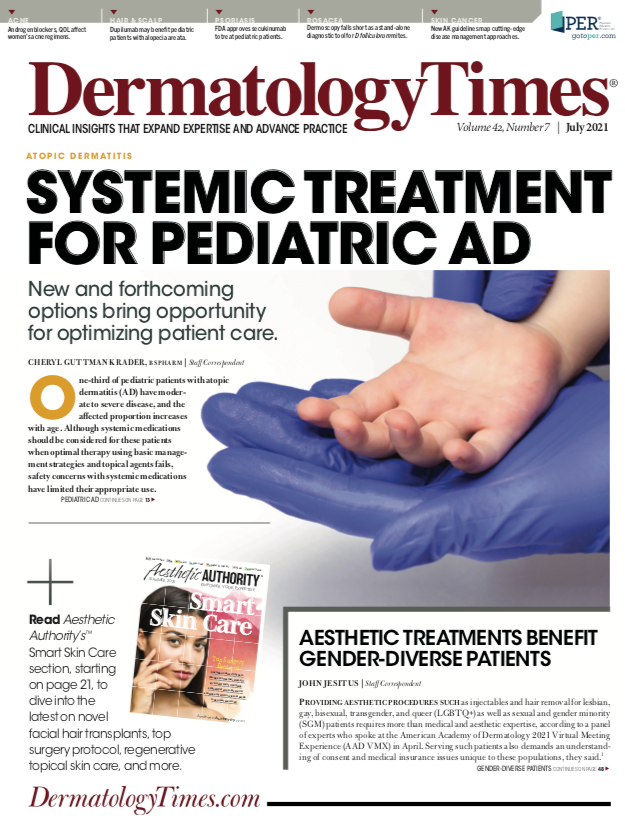- Case-Based Roundtable
- General Dermatology
- Eczema
- Chronic Hand Eczema
- Alopecia
- Aesthetics
- Vitiligo
- COVID-19
- Actinic Keratosis
- Precision Medicine and Biologics
- Rare Disease
- Wound Care
- Rosacea
- Psoriasis
- Psoriatic Arthritis
- Atopic Dermatitis
- Melasma
- NP and PA
- Skin Cancer
- Hidradenitis Suppurativa
- Drug Watch
- Pigmentary Disorders
- Acne
- Pediatric Dermatology
- Practice Management
- Prurigo Nodularis
- Buy-and-Bill
Publication
Article
Dermatology Times
How to Effectively Partner with Patients to Optimize Care
Author(s):
Combined, these efforts encourage active participation in the care process and drive sustained behavior change.
Patient engagement is a cornerstone of health care quality, driving active collaboration and shared decision-making among patients, families and providers. Now more than ever, patients are becoming informed consumers of health care services, leveraging increased access to their digital health records and extensive condition-specific information available online.
This dynamic presents an important opportunity for health care providers to build more effective patient partnership models throughout the customer’s lifecycle. Today’s patients want—and need—access to trusted health care content and digital health technology that empowers them to make educated care decisions.
Provider organizations are best-positioned to fill this need by providing consistent, authentic, and personalized connections by adopting advanced digital platforms and other technologies that not only address patients’ immediate needs, but support their overall health and well-being goals.
Many patient engagement approaches attempt to convey information that changes customer behavior, drives informed decision-making and helps people achieve their highest potential for good health.
In the past, engagement efforts focused primarily on education at the point of care. Patients are accustomed to receiving printed materials at the end of their encounter in the form of discharge instructions or leaflets. Some go further, conducting follow-up calls to see if the patient has questions about their care.
Working towards an authentic patient partnership that lasts throughout the customer lifecycle helps health care providers progress beyond these steps, leading to comprehensive programs that set measurable goals and objectives that encourage alignment between patients and their care teams.
New technologies are revolutionizing patient engagement, allowing for ongoing communication across the care continuum. It’s important for providers and provider organizations to build trust at every patient touchpoint to achieve sustained behavior change through informed decision-making.
It’s important, too, that the communication emulate the nurturing experience of a clinical professional who listens with empathy and responds without judgement.
Here are 5 steps providers can take to help patients make the right care choice at the right time, ultimately improving clinical, financial and quality outcomes:
Patient education is the basic requirement for patient engagement across the enterprise. Providing educational materials such as patient summaries, discharge instructions or written materials on new medications helps patients better understand their condition(s) and available treatment options.
Effective engagement deepens understanding of overall health and wellness. But it also requires that providers shift from a one-size-fits-all way of informing patients to using multiple communication and education mediums and tailoring solutions to specific service lines and care encounters. This includes addressing concerns around socioeconomic status, culture, race, gender, or sexual orientation that if left unaddressed could marginalize patients or create unnecessary barriers to care.
Better informed and better engaged patients are more likely to participate in preventive care and wellness activities. At this stage, patients and providers shift from reactive care within a health episode to proactive health and wellness care.
Coaching helps facilitate the transition from transactional to longitudinal care. It helps patients adhere to their treatment and wellness plans, and addresses barriers to adherence. Better adherence leads to fewer hospitalizations and readmissions, contributing to improved outcomes and quality, while reducing the cost of care.
Remote monitoring capabilities support coaching and care management to ensure patients receive timely advice from a trusted source.
Partnership is the final, aspirational step of the patient-provider relationship. Patients become valued partners of the care team who are incentivized to improve health outcomes. Partnership supports whole-person care through real-time, personalized interaction throughout the customer lifecycle.
Patient education has been, and will continue to be, a critical part of the care experience. Combined, these efforts encourage active participation in the care process and drive sustained behavior change. Patients will be confident in their ability to make their own care decisions and care teams will be confident that patients are making informed choices.







